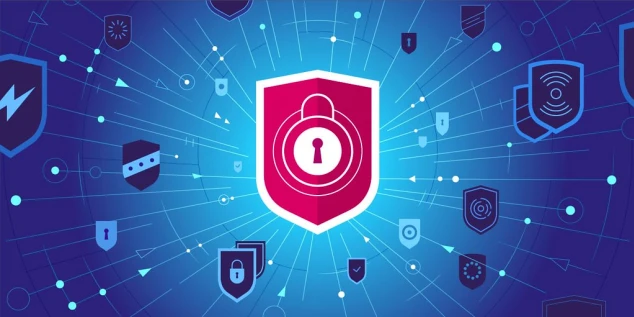Security Risks of Open-Source Software & Mitigations to Overcome Them

Open-source software, or OSS, has completely changed the technology sector by enabling developers anywhere to work together and produce creative solutions faster. However, security issues are a significant worry, just like in any digital environment. Therefore, you should take precautions to secure any open-source software you use.
Businesses repurpose open-source software and must have a strategy to handle the open-source security threats that could be introduced into their IT estates by third-party source code. This article explains how to manage open-source software security risks and vulnerabilities and defines how to achieve robust open-source security.
What Are the Security Risks of Open-source Software?
 Most people use open-source software due to its freedom to modify and customize the code according to user needs. Even people look for open-source streaming devices as most are locked to be used with the manufacturer's recommendation. For example, Amazon Fire Stick comes locked to be used with specific services like Prime Video, Netflix, HBO Max, and other popular streaming services.
Most people use open-source software due to its freedom to modify and customize the code according to user needs. Even people look for open-source streaming devices as most are locked to be used with the manufacturer's recommendation. For example, Amazon Fire Stick comes locked to be used with specific services like Prime Video, Netflix, HBO Max, and other popular streaming services.
However, many users want to use the device as per their requirement and prefer using more services for which they choose to unlock their device. Now, unlocking your Amazon Firestick opens the door to exploring more apps and streaming services. The advantage of doing this is that users can use affordable and free services to meet their needs.
Although unlocking any device brings some security concerns, that happens with every open-source tool or software that allows customization or modification. To learn more about OSS security threats, let's examine a few security concerns that may come from using open-source code.
Known Vulnerabilities
The most dangerous security risk is open-source code with a known security flaw. Security flaws are documented in open databases such as MITRE CVE. The databases describe the software versions susceptible to attack and provide instructions on launching the attacks.
Although developers can use this information to address security flaws, attackers can also utilize it to exploit software vulnerabilities. As a result, attackers can quickly take advantage of open-source modules, libraries, or other components used by businesses that are vulnerable to known security flaws.
Inaccurate Setups
Businesses occasionally utilize open-source software that is not set up in the safest manner feasible. Businesses may, for instance, use open-source container images that execute commands as root (unsecured).
Alternatively, depending on a business's specific requirements, a sophisticated open-source platform may come with access control settings that are not overly permissive. In certain situations, maliciously designed software may facilitate or broaden attackers' attack surface for exploiting vulnerabilities.
Lack of visibility
Sometimes, programmers use open-source code without properly crediting the author or documenting the source. It becomes challenging to guarantee that they adhere to standard practices for securely handling the code.
For example, the code's original authors may have provided documentation on configuring it safely. Still, if the code is reused in a way that makes it unclear where it originated from or what security precautions its creators advised, it might be challenging to follow those guidelines.
How Can I Mitigate the Risks of Open-Source Software to Achieve Robust Security?
Luckily, there are practical measures you can take to mitigate the risks discussed above and achieve robust open-source security:
 Identify open-source risks.
Identify open-source risks.
Organizations risk legal action and intellectual property theft if open-source licenses are broken. Similarly, using antiquated or subpar components might lower the caliber of applications that utilize them. Do you have the most recent version of the open-source component installed? Is it the steadiest? Does a strong community actively maintain the component?
Examine your available sources.
Making an inventory of all the open-source components your teams utilize to produce software should be your first step because you can't secure what you're not tracking. A comprehensive inventory must include every open-source component, the version(s) used, and the download locations for all active and upcoming projects. All dependencies—the libraries your code references and/or the libraries to which your dependencies are linked—must also be listed in your inventory.
Employ the best IT professionals.
If you still need to acquire in-house human capital for your open-source projects, your first move should be to bring the right people on board or locate the best software outsourcing provider. Severe vulnerabilities can be easily caused by an open-source community devoid of security expertise and a security team that lacks an understanding of the project design.
When employing candidates, evaluate their knowledge practically rather than just focusing on their credentials. Even if someone has all the qualifications on paper, you shouldn't hire a Linux security expert who has never heard of Apache Struts.
Select a strong password, and keep it confidential.
The cornerstone of any open-source project's security is password protection. Don't share your password with anyone; never use a password visible to everyone. It is advisable always to think that someone is observing you and trying to obtain your passwords. Strong passwords and a password manager are reasonable security measures.
Maintain privacy for your open-source project. Verify someone's identity and motive whenever they request access. When in doubt, refuse entry, and be mindful of the dangers of permitting excess.
When signing your releases, use a code-signing certificate.
Code signing certificates are the digital security credentials needed to sign scripts and executables containing your software's cryptographic key. These digital signatures guarantee that the file is authentic and hasn't been altered since your private key was used to sign it.
SSH is the protocol of choice for accessing your code repositories. If you're using the Git or Subversion source control management system, use SSH to access your repositories. This guarantees you can only connect with the proper credentials and stop brute-force assaults.
Backup and encrypt your data and files.
Encrypting and backing up your data and files is crucial in ensuring your OSS is secure. Encryption can shield your data from theft or unwanted access, mainly if you use OSS on cloud or mobile platforms. You can use programs like LUKS, VeraCrypt, or GnuPG to encrypt your data. Backups can aid in data recovery during data loss, corruption, or ransomware attacks.
Instruct and prepare yourself and your users.
Lastly, you should train and educate yourself and your users on open-source software's hazards and best practices. Adhering to the directives and suggestions provided by open-source software development (OSS) groups and reliable resources such as OWASP, NIST, or SANS is advisable. Additionally, you should instruct your users on how to stay safe from common dangers like phishing and malware.
Check your code frequently for security flaws.
The best way to automate your code audits is to use code audits. They don't need human assistance to identify common weaknesses. Using Git hooks, you may set them up to execute automatically with each new commit or pull request. This guarantees that all units in your repository are scanned for security flaws each time a new branch for a feature set is created.
Our Final Thoughts on Open-Source Software Security
An open-source project that is secure has a much higher chance of success than one that is insecure. Although there are many things you can do to make sure your project is effectively safeguarded, any secure open-source venture must surely start with the recommended practices covered in this article.
Checking for vulnerabilities regularly can help you know what changes to make in your open-source security strategy. Moreover, training your staff to identify and rectify security risks can help your company enhance the security of your software and data.




















